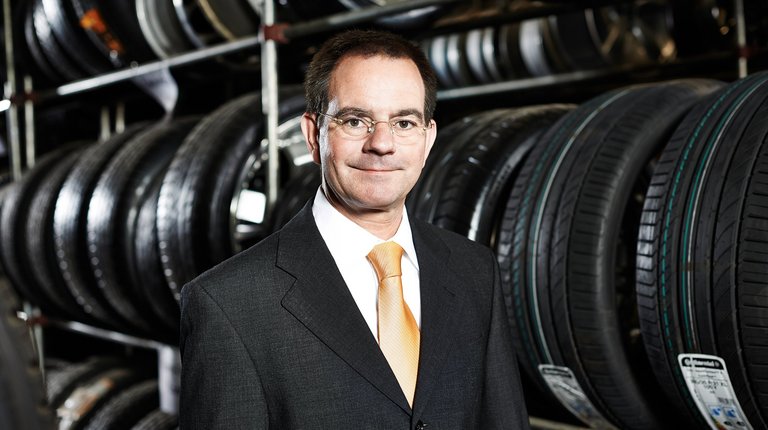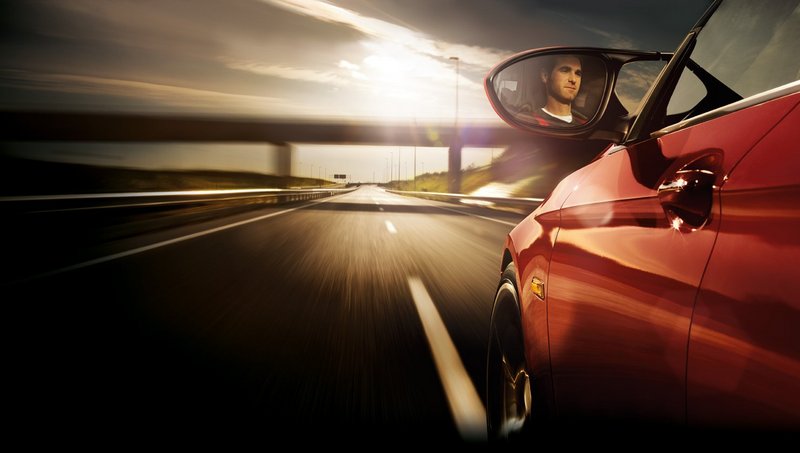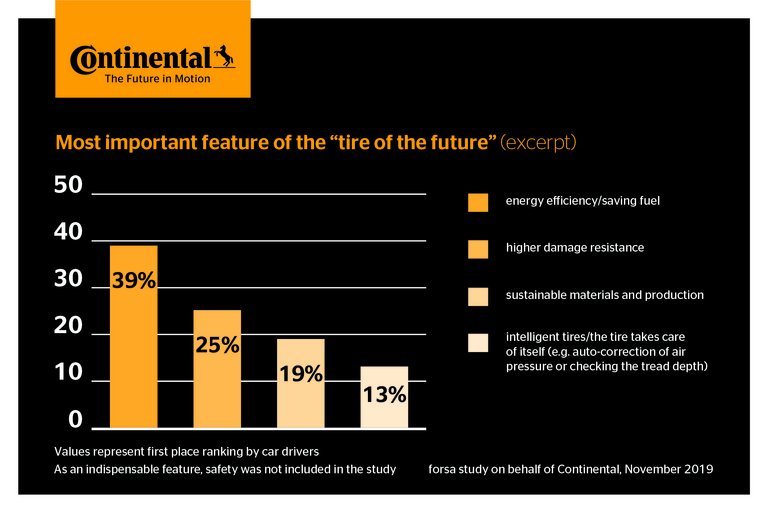The Tire of the Future Should Above All Save Fuel
- Continental and forsa conducted a survey on “The Tire of the Future”
- Respondents say tire developers should give priority to saving fuel
- Consumers find price/performance ratio more important than sustainable production
Hanover, February 27, 2020. Technological trends like the e-scooter, social phenomena like ‘flight shame’, and long-term topics such as alternative drive systems and automated or autonomous driving illustrate how all aspects of mobility are constantly evolving. This prompted technology company Continental to join with market research institute forsa to conduct a survey of what drivers expect of the car tire of the future, above and beyond maximum safety. More than 1,000 drivers across Germany took part in the representative survey in November 2019. The outcome? For just over 40 percent of respondents, the most important consideration was that, in the future, tires should do even more to save fuel. Second place went to puncture resistance.
As the survey revealed, answers differ from one age group to the next: For 18-29-year-olds, for example, puncture resistance was the most important consideration. The desire for an energy-efficient tire was strongest among 45-59-year-olds, while sustainability in respect of material and production was the top priority for 30-44-year-olds.
There were no surprises when the Continental survey turned to the question of future tire prices: 92 percent of respondents rated the price/performance ratio as important or very important. At the same time, 75 percent of drivers said that lower rolling resistance and the accompanying drop in fuel consumption was important or very important to them. A tire that is optimized for rolling resistance and mileage can indeed have a positive impact on the total operating costs of a car. “That’s why consumers should always pay attention to the EU Tire Label,” explains Continental tire development engineer Andreas Schlenke. “An ‘A’ rating for rolling resistance tell you that the tire rolls very energy efficiently. And if it is also rated ‘A’ for wet braking, you can be sure you’re buying a very safe and sustainable tire.”
“The social debate over the mobility of the future will definitely influence the future of the car tire,” Schlenke continues. “Our products will play an even greater part in delivering safety, as well as boosting energy efficiency, puncture resistance and sustainability. It’s worth pointing out, though, that we already offer products that meet these demands of the tire of the future. For example, our current EcoContact tire generates 20 percent less rolling resistance than its predecessor and delivers 12 percent more mileage. Our Taraxagum technology shows that dandelion rubber offers an alternative to rubber sourced from the tropics. For electric cars we have developed special technologies that ensure very low rolling resistance while delivering strong performance in terms of the safety-relevant criteria. For greater puncture resistance, our ContiSeal technology seals a tread puncture immediately. And before long, our tires will be able to tell for themselves when the tread is worn. In the future they will likely also monitor and adjust tire pressures without having to interrupt the journey.”

Klaus Engelhart
Press Spokesman
Passenger Car Tires / Germany, Austria, Switzerland
- +49 511 938-2455

Michael Nehring
Manager Media Relations
Passenger and Truck Tires Region Europe, Middle East & Africa
- +49 0 511 938 2230

